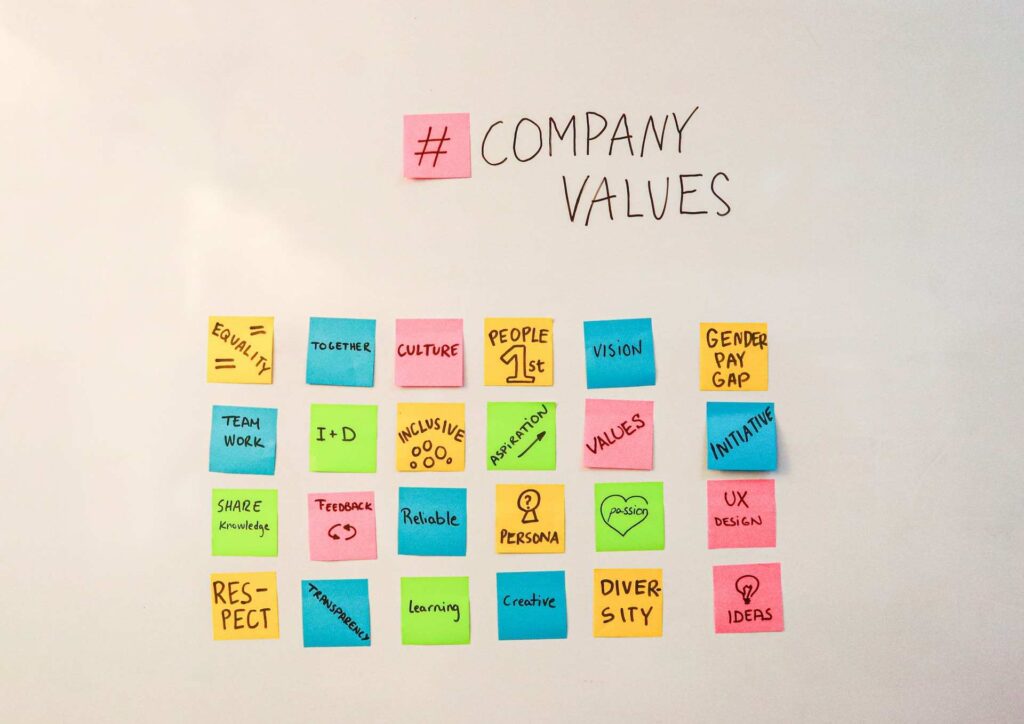[Guide] This you should know about Organizational Culture: Definitions, types and more

Organizational culture is one of the most important factors for the success of companies. However, it can be confusing about the broad scope of the concept and how to apply it to any organization.
And it's not just about free pizzas or going out to eat or drink. The organizational culture has as its focus mold the desired behaviors and/or attitudes of collaborators. This can be from management to workers, but can also be extrapolated to clients or stakeholders of the company. The purpose is that All members and leaders of the organization build the foundations to reach a common goal.
The Gartner consulting firm conducted a study where he detected that organizations with a prosperous organizational culture and solid work communities will help enhance many measures. Some of them are, for example, increase the net profits of an organization. It also influences 66 % less employee burnout and up to 63 % more employee retention.
So, Are you ready to get down to what's important? In this article you will learn about the main guidelines and considerations of organizational culture.

What is the organizational culture?
Organizational culture is a widely debated and studied concept. In fact, “they have been identified 54 definitions in academic literature between 1960 and 1993”.
The word “culture” has multiple meanings. However, if we go to the different definitions of the word, one of them refers to the word crop. This word, in turn, means “put in place the necessary means to maintain and strengthen knowledge, treatment or friendship.”
This last definition is closely linked to the concept of organizational culture. In accordance with the School of Industrial Organization (EOI), organizational culture includes “the expectations, experiences, philosophy, values of an organization that hold it together and are expressed in its own image, internal functioning, interactions with the outside world and expectations. They are moral and ethical standards that have been developed in an organization and are considered valid.”
Meanwhile, from the Academy to Innovate in Human Resources, organizational culture is how leadership tends, cultivates or takes care of the company, the stakeholders and collaborators. “Culture can be defined as the consistent organizational behaviors of workers and leaders”, they claim.
“Organizational culture is the basis for the development of sustainable advantages and seeks, through its development, to invite organizations to reintegrate into society.”
Adolfo Jarrin, Specialist in Organizational Transformation and Leadership
Who develops the organizational culture?
There is an intrinsic connection between culture and leadership. Founders and influential leaders are the main people in charge of developing organizational culture. It is they who imprint the values and ways of life at work that can persist for a long time.
In accordance with Harvard Business Review, the leaders They are the ones who shape the culture through conscious or unconscious actions. “The best leaders we have observed are fully aware of the multiple cultures in which they are embedded, can sense when change is required, and can skillfully influence the process.”
For leaders to skillfully develop an organizational culture, there are three dimensions they must observe. According to PwC, some of them are:
- symbolic reminders: artifacts that are completely visible. Like, for example, some accessory or object with the company brand. Also the organization's commitment to activities that are in line with its values.
- Key behaviors: recurring acts that trigger other behaviors and that are both visible and invisible. For example, group activities that maintain on high the engagement from the workers.
- Mentalities: attitudes and beliefs that are widely shared, but exclusively invisible. For example, those values that are contained in the company's mission and vision.
Of these, key behaviors are the most determining dimension when it comes to making a real change. "Which People really do matter more than what they say or believe. And so, to obtain more positive influences from your cultural situation, you must start working on changing the most critical behaviors,” they say from PwC.
What is the importance of developing Organizational Culture?
Developing organizational culture is important since it creates the foundations for effective coexistence and communication between workers and leaders. In this way, employees will know how leaders need to respond to any situation.
Besides, according to studies, developing an organizational culture does positively correlate leadership behavior and employee job satisfaction. “They will be stimulated to fulfill the mission and objectives assigned by the organization, thus improving job satisfaction.” Finally, developing a good organizational culture improves productivity and increases the company's profitability. All of the above can also externally reflect the good image of the company.
According SHRMIf a company does not develop its organizational culture, it can have the following consequences:
- Have uncommitted collaborators.
- Increased employee turnover.
- Bad relationships or friction in communication with clients and/or stakeholders.

5 factors that shape strong organizational culture
Below, we present the 5 factors that shape organizations. Let's check them out.
The values
At the center of any organization and/or company are its values. This factor is important, since it will help focus the priority on actions and tasks to channel the organizational culture. These common values can be, just as an example:
- Results oriented: Highlighting achievements and results.
- People orientation: Insisting on equity, tolerance and respect for the individual.
- Team orientation: Emphasize and reward collaboration.
- Pay attention to the details. Assess precision and analytically approach situations and problems.
- Innovation. Encourage experimentation and risk-taking.
The type of hierarchy
The degree of hierarchy is the extent to which the organization values traditional channels of authority. According to SHRM, an organization with a high level of hierarchy tends to be more formal and moves more slowly than an organization with a low level of hierarchy.
Level of urgency regarding your stakeholders
This factor defines how quickly the organization needs to drive decision making. “An organization with a lot of urgency tends to be fast-paced and supports a decisive management style. In fact, an organization with low urgency tends to be more methodical and supports a more forgiving management style.” They say from SHRM.
Communication and transparency
Another factor that can shape organizational culture is communication and transparency. In very large companies, many teams may work in isolation with different tools. Therefore, drawing a line regarding what is expected of the teams and establishing communication channels will help keep the organizational culture alive.
Organizational subcultures
Any organization can have a mixture of subcultures in addition to the main culture. Subcultures exist between groups or people who have their own interactions outside the company. Although they are not shared by the rest of the organization, they can deepen and underscore the organization's core values. Given this, Leaders must recognize those differences and address them.
4 types of organizational culture
There are many types of organizational culture that companies develop. However, these are the four main ones. The information corresponds to AIHR and Buillit.

Clan Culture
Main focus: Mentoring and teamwork.
Slogan: "We are all in this together".
What is it about?: They are common in small or family businesses whose hierarchical level is not very relevant. This is a highly collaborative work environment where each individual is valued and communication is a top priority. These companies are action-oriented and embrace change.

Adhocracy Culture
Main focus: risk taking and innovation.
Slogan: “Take risks to achieve the goal.”
What is it about?: It comes from the word “Ad Hoc” and “bureaucracy”. Adhocracy cultures are rooted in innovation and adaptability. These are the companies that are at the forefront of their industry – looking to develop the next big thing before anyone else has started asking the right questions. To do so, they need to take risks. The cultures of adhocracy They value individuality in the sense that encourages employees to think creatively.

Market Culture
Main focus: competition and growth.
Slogan: “We are in this to win it.”
What is it about?: The market culture prioritizes profitability. Everything is evaluated with the end result in mind. Each job has an objective that aligns with the broader goal of the company. These are organizations that focus on external success rather than internal satisfaction. While this type of culture can ensure profit in the business, workers can become burned out from high expectations and constant demand.

Hierarchical Culture
Main focus: Structure and stability.
Motto: "Do it good."
What is it about?: Usually, these companies adhere to a traditional corporate structure. They are focused on internal organization and separate employees and leadership into chains of command. Within the rigid structure, you may include a particular dress or behavior code. It allows you to better manage risk, be stable and operationally efficient. However, it could impede innovation, agility and be unreceptive to sudden changes.
How to measure the effectiveness of organizational culture?
To know the effectiveness of the organizational culture, it is suggested to carry out a series of activities. But also review relevant metrics. What we suggest you do is the following:
- Beam work environment surveys.
- Look at the employee turnover rate.
- Measures the level of commitment of collaborators.
Frequent questions
Who defines organizational culture?
Leaders are responsible for defining organizational culture. They must communicate the aspects that identify the company to current collaborators and new employees. They are clear about their values and how these values define their company. Lastly, they will determine how it will be handled and applied in the workplace.
What is the impact of organizational culture?
An organizational culture impacts greater team trust and cooperation, fewer disagreements, and more efficient decision making. Culture also provides an informal control mechanism, a strong sense of identification with the company and a shared understanding among employees.